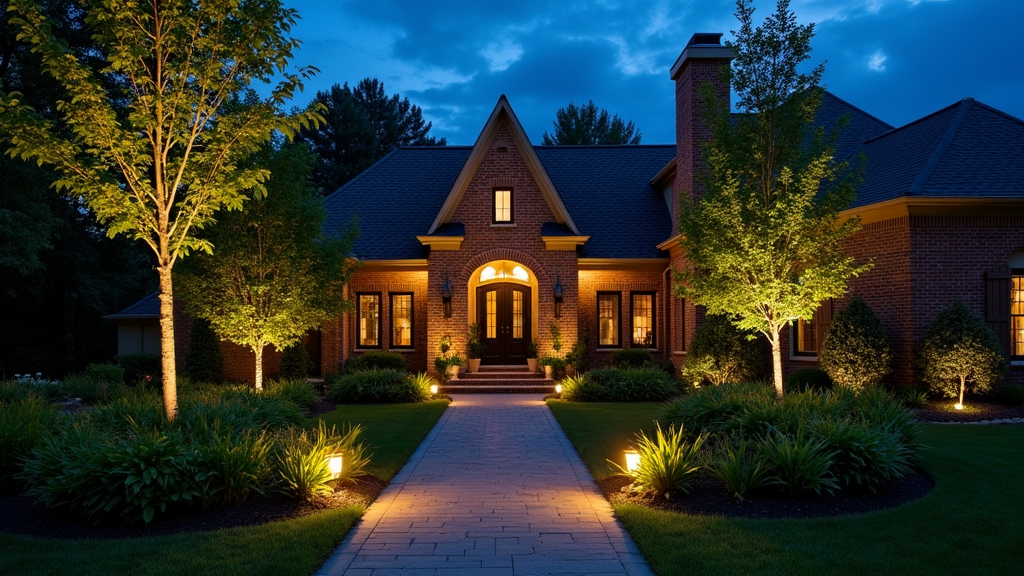Creating a beautiful yard is often a labor of love, but when you have children, it also comes with an extra layer of responsibility. You want your space to be inviting and aesthetically pleasing, but your kids' safety must come first. Striking this balance can feel like walking a tightrope, especially when you consider the potential hazards that can lurk in your garden. In this comprehensive guide, we will explore various strategies for "Keeping Your Children Safe While Maintaining a Beautiful Yard," ensuring that both your landscape and your little ones thrive.
Lawn Care: A Foundation for Safety and Beauty
One of the most vital aspects of maintaining a yard is lawn care. Healthy grass provides not just visual appeal but also a soft place for children to play.
Importance of Lawn Care in Child Safety
Why is lawn care crucial when it comes to child safety? Well-maintained lawns can prevent injuries from falls or cuts that might occur on uneven surfaces or thorny plants. Regular mowing keeps grass at an appropriate height, which reduces the risk of hidden hazards like sharp objects or insect nests.

Choosing Child-Friendly Grass Varieties
Not all grass types are created equal. Some varieties are more resilient and safer for kids than others. Consider opting for:
- Perennial Ryegrass: Soft and quick to establish. Kentucky Bluegrass: Durable with excellent wear tolerance. Bermudagrass: Ideal for warmer climates, very hardy.
Choosing the right kind of grass sets the stage for safe playtime.
Organic Lawn Care Practices
Chemical treatments may promise lush green grass but often come with risks, particularly for children who spend time outdoors. Organic lawn care practices not only protect your children's health but also contribute to sustainable living. Consider using natural fertilizers like compost and organic pest control methods such as neem oil.
Regular Maintenance Checks
A well-kept lawn requires regular maintenance checks. Look out for:
- Sharp objects or debris Pest infestations Uneven patches or holes
Keeping a vigilant eye on these factors can help ensure that your lawn remains a safe haven for play.
Designing Safe Play Areas Within Your Yard
Creating designated play areas in your yard can enhance both safety and enjoyment for your children.
Selecting the Right Location
When choosing where to set up play areas, consider distance from roads, water features, or any hazardous plants. Ideally, these areas should be far removed from busy paths while still being easily visible from inside the house.
Soft Ground Cover Options
To cushion falls during playtime, use soft ground cover options like:
- Rubber mulch Artificial turf Natural grass
These materials offer shock absorption while keeping aesthetics in mind.
Installing Safe Play Equipment
If you're considering adding playground equipment like swings or slides, ensure they are made from durable materials and meet safety standards. Regularly check equipment for wear and tear to prevent accidents.
Landscaping with Safety in Mind
While flowers and shrubs can beautify your yard, some plants pose dangers to children.
Identifying Hazardous Plants
Certain plants are toxic if ingested or can cause skin irritation. Here’s a list of some common hazardous plants:
| Plant Name | Toxicity Level | |-----------------------|--------------------------| | Oleander | Highly toxic | | Azalea | Mildly toxic | | Foxglove | Highly toxic | | Poison Ivy | Skin irritant |
Make sure to research any plants before incorporating them into your yard design.
Creating Natural Barriers
Consider using non-toxic hedges or fences as barriers around potentially dangerous areas without sacrificing beauty. This tactic keeps curious little hands away from harmful spots while enhancing the aesthetic appeal of your home.
Water Features: Aesthetic vs. Safety Concerns
Water features like ponds and fountains add charm but come with serious safety considerations when children are involved.
Installing Safe Water Features
If you’re keen on adding water elements:
- Use shallow basins that are easy to supervise. Incorporate child-proof covers. Use fencing around deeper pools or ponds.
These precautions allow you to enjoy the beauty https://www.ramirezlandl.com/about of water without compromising safety.
Utilizing Fencing Effectively
Fencing doesn’t just provide privacy; it plays an essential role in keeping children safe within your property boundaries.
Types of Fences That Enhance Safety
Consider installing:
Wooden Fences: Durable and customizable. Vinyl Fences: Low maintenance with no splinters. Chain-Link Fences: Affordable visibility without obstructing views.Choose materials that blend well with the overall aesthetics while providing security against wandering off into unsafe areas.
Maintaining Visibility in Your Yard Design
Visibility is key when ensuring children's safety outdoors; parents need to keep an eye on kids playing outside easily.

Open Spaces vs. Cluttered Gardens
Opt for open spaces rather than dense shrubbery where kids could hide or get hurt unknowingly. If you have flower beds, maintain clear pathways that allow visibility throughout the yard so parents can monitor their children effectively while they play freely.
Safe Outdoor Furniture Choices
Outdoor furniture can add comfort but must be chosen wisely to avoid accidents caused by sharp edges or unstable structures.
Selecting Kid-Friendly Furniture Materials
When selecting outdoor furniture options:
- Opt for rounded edges over sharp corners. Choose lightweight pieces so they're easy to move if necessary.
Materials like plastic or treated wood provide durability without compromising child safety during playful moments outside.
Educating Children About Yard Safety Rules
It’s essential to educate your children about safety rules in the yard—knowledge empowers them!
Setting Ground Rules for Outdoor Play
Create simple yet effective rules such as:
No climbing on fences. Stay away from garden tools. Always tell an adult before going near water features. Avoid running near flower beds where bees might be present.Use fun methods like games or visuals to help them remember these rules effortlessly!
The Role of Parents in Yard Supervision
Even with all precautions taken, nothing beats parental supervision when it comes down to kids playing outdoors!
Being Present During Playtime
Even if you’re busy gardening or performing lawn care tasks nearby—keep an ear out! Engaging occasionally by joining their activities helps foster trust while ensuring their well-being simultaneously!
Seasonal Considerations for Lawn Care & Child Safety
Different seasons bring unique challenges regarding both landscaping needs while ensuring optimal child safety outdoors!
1) Spring: Preparing Your Yard
Spring brings growth after winter dormancy; however, it also heralds maintenance responsibilities! As flowers bloom and weeds appear—ensure thorough inspections occur regularly!
- Fertilization Timing
Timing fertilization right during spring helps strengthen growing roots—this avoids mud puddles forming which could lead trips & falls later!
- Removing Debris after Winter
Winter leaves behind hidden dangers; remove sticks lying around along with any dead vegetation early on before they become tripping hazards!
Conclusion
In conclusion, keeping your children safe while maintaining a beautiful yard doesn't have to be mutually exclusive goals! With proper planning—like selecting kid-friendly landscaping choices along with practicing smart lawn care—you'll create an inviting environment where both aesthetics shine brightly alongside heightened awareness regarding potential hazards lurking within nature's embrace!
By integrating these principles into daily practices—from thoughtful plant selections through regular supervision—you'll cultivate not just stunning greenery—but cherished memories amidst laughter-filled afternoons spent under sunny skies! So go ahead—dig deep into this rewarding endeavor today!
FAQs
Q1: What are some eco-friendly lawn care options? A1: Eco-friendly options include using organic fertilizers like compost, applying natural pest controls such as neem oil, and opting for drought-resistant grass varieties that require less water.
Q2: How should I handle weeds safely around my kids? A2: You can use natural weed control methods such as vinegar solutions or boiling water instead of chemical herbicides that may pose risks to children's health.
Q3: What type of mulch is safest if my child plays nearby? A3: Rubber mulch offers cushioning benefits without splintering risks; it's durable yet soft enough for little feet exploring new terrains!
Q4: How often should I check my outdoor equipment? A4: Inspect outdoor equipment at least monthly—or more frequently during heavy-use months—to ensure everything remains secure free from wear-and-tear issues over time!
Q5: Are all flowers safe around children? A5: No! Some popular garden flowers contain toxins harmful if ingested—for example Oleander & Foxglove should be avoided entirely while planting close proximity where small hands wander freely!
Q6: What precautions should I take concerning nearby roadways? A6: Installing sturdy fencing along property lines adjacent roads acts as barriers preventing wandering off accidentally helping keep curious explorers securely contained within designated areas only accessible via adult guidance!